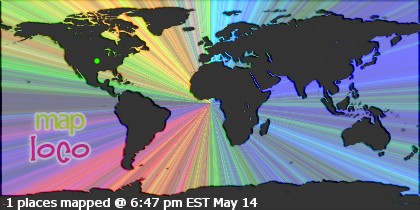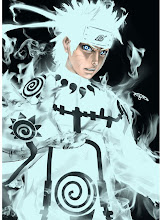5. ANIME BEYOND JAPAN
- Early anime in the United States
The United States saw its first exposure to anime in June of 1961, when Shônen Sarutobi Sasuke (Magic Boy) was released by MGM, followed a few weeks later by Hakuja den (Panda and the Magic Serpent, or The Tale of the White Serpent). Anime then got its running jump in September of 1963, when NBC syndicated a dubbed version of the Japanese series Astro Boy. Not counting such Japanese/American co-productions as The King Kong Show and Johnny Cypher in Dimension Zero[1], only seven more anime TV series were released in the United States in the 1960s. These were 8 Man (1965), Gigantor (1966), Kimba the White Lion (1966), Prince Planet (1966), Marine Boy (1966), The Amazing 3 (1967) and Speed Racer (1967). Speed Racer would be the last anime series released in the United States until 1978 when the 1972 series Kagaku ninja tai Gatchaman was adapted for American audiences as Battle of the Planets.[9] Many anime series that made it to American television from the 1960s through the 1980s tended to be science fiction or action-oriented, such as Star Blazers (the English dub of Space Battleship Yamato) and Robotech and Voltron (both Americanized amalgamations of unrelated anime series cobbled together into a single story).
As the 1980s wore on, more anime series and films targeted at very young children also found their way to U.S. TV screens, often on cable television channels or in syndication. Nickelodeon broadcast many mostly Canadian-made English dubs of anime films during its early years, including TV series such as Mysterious Cities of Gold, Adventures of the Little Koala, Belle and Sebastian, The Adventures of the Little Prince, Noozles, Maya the Bee, Grimm's Fairy Tale Classics, and The Littl' Bits, many of which were aired on "Nick Jr.", the network's block of programming for very young viewers. The Disney Channel broadcast both of the feature-length anime films starring Osamu Tezuka's popular unicorn character Unico, and CBN redubbed and broadcast its Bible-based anime TV series co-produced with Tatsunoko, Superbook and The Flying House. HBO also showed juvenile-targeted anime on occasion, including TV series such as Tales of Little Women, The Adventures of Tom Sawyer, The Wonderful Wizard of Oz, and Saban's Adventures of Pinocchio and feature films such as Gisaburo Sugii's 1974 Jack and the Beanstalk.
A great many anime films and feature-length TV series compilations were also released direct-to-video in the U.S., and were often available for rental at mainstream video stores. Some titles which were distributed in the U.S. in this fashion included Candy Candy, Captain Future, Angel, Serendipity the Pink Dragon, Taro the Dragon Boy, Robby the Rascal (Cybot Robotchi), and Ninja the Wonder Boy (Manga Sarutobi Sasuke).
For the most part, though, these TV series and films were not actively promoted as being of Japanese origin; in fact, many of them went so far as to remove most or all Japanese names from the credits except for credits to the animation studios. In the series themselves, character names were often changed and Japanese cultural references removed to make them more accessible to English-speaking audiences, such as Genshi being changed to Flint in Space-Time Detective Genshi-kun. In the late 1990s and early 2000s, this trend began to change as more openly Japanese works, such as Sailor Moon, Gundam Wing, Pokémon, Dragon Ball Z, Digimon, and Yu-Gi-Oh! achieved mainstream popularity on American television. Although many of these shows did undergo some kind of "Americanization" in the form of character name changes and edits for violence, language, and the occasional nudity, viewers were more aware of the shows' country of origin, which might perhaps pique their curiosity to seek out other works in a similar style.
- Current reception in the United States
AnimeNation’s John Oppliger had this to say on the matter:
- The support for anime among American anime fans is very strong. The availability of anime in America is truly impressive, especially within the anime fan community. Awareness of Japanese animation in America is at an all time high. However, mainstream acceptance of anime in America lags far behind the advances anime has made in other respects. A close examination of the support for anime on American television may provide a revealing and realistic gauge of the actual penetration of anime into America and American culture. Anime may seem like it's tremendously successful in America because its high profile, but the facts tell another story.
- According to AC Nielsen, Pixar's The Incredibles sold 16 million copies on DVD in America last year. Shark Tale sold nearly 10 million copies. Even the DVD release of Bambi sold 6 million copies in 2005. In comparison, all four Inuyasha movies combined have sold just over 1 million copies in the past year and a half. Evidently, the success of anime in America is very relative. American anime fans are very devoted. Through underground means hardcore American fans now have access to brand new Japanese anime before even many Japanese residents do. America's anime fan community is influential because it's affluent, intelligent, and motivated; but it's not very large.
Despite assessments like that, and its rare and limited release in American theaters, anime's legitimacy and respect in North America has grown well enough to garner major native artistic awards such as the Academy Award for Best Animated Feature in 2002 for Spirited Away by Hayao Miyazaki. Anime has a dedicated fan following in English speaking countries, particularly active on the internet, and at conventions regularly held throughout the US and UK.
- Commercial appeal
Anime has become commercially profitable in western countries as early commercially successful western adaptations of anime, such as Astro Boy, have revealed.[11] The phenomenal success of Nintendo's multi-billion dollar Pokémon franchise[12] was helped greatly by the spin-off anime series that, first broadcast in the late 1990s, is still running worldwide to this day.
- Licensing
Anime is available outside of Japan in localized form. Licensed anime is modified by distributors through dubbing into the language of the country. The anime may also be edited to alter cultural references that may not be understood by a non-Japanese person and certain companies may remove what may be perceived as objectionable content. This process was far more common in the past (e.g. One Piece), when anime was largely unheard of in the west, but its use has declined in recent years because of the demand for anime in its original form. This "light touch" approach to localization has proved popular with fans as well as viewers formerly unfamiliar with anime. The popularity of such methods is evident by the success of Naruto and Cartoon Network's Adult Swim programming block, both of which employ minor edits. The "light touch" approach also applies to DVD releases as they often include both the dubbed audio and the original Japanese audio with subtitles, are typically unedited. Anime edited for television is usually released on DVD "uncut," with all scenes intact.
Anime has also been a commercial success in Asia, Europe and Latin America, where anime has become even more mainstream than in the United States. For example, the Saint Seiya video game was released in Europe due to the popularity of the show even years after the series has been off-air.
- Fansubs
Although it is a violation of copyright laws in many countries, some fans watch fansubs, recordings of anime series that have been subtitled by fans. Watching subtitled Japanese versions, though not necessarily downloaded fansubs, is seen by many enthusiasts as the preferred method of watching anime. The ethical implications of producing, distributing, or watching fansubs are topics of much controversy even when fansub groups do not profit from their activities and cease distribution of their work once the series has been licensed outside of Japan.
- Influence on Western animation
Anime-influenced animation refers to non-Japanese works of animation that emulate the visual style of anime. Though most of these works are created by and primarily shown in the United States, many also involve production studios from Europe and non-Japanese Asia. These generally adapted anime stylizations and anime methods described in anime physics into their own. Such examples exist in Totally Spies!, The Boondocks, W.I.T.C.H. and Megas XLR. In addition, works such as Avatar: The Last Airbender features Asian themes. While these examples are not considered anime by the fanbase majority, they are best noted for being "influenced by anime".




![[Cracked Application] YouToob 6.9 / Spk Youtube Bot](http://ajulinc.org/wp-content/uploads/2011/09/9-13-2011-12-31-51-AM2.png)





